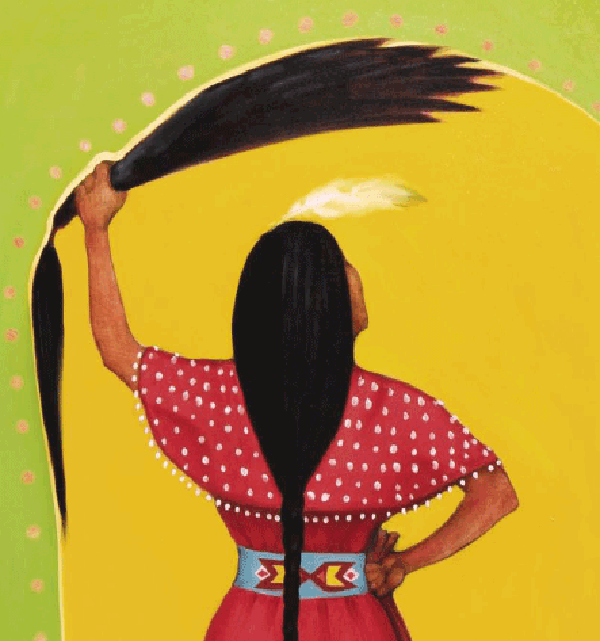September 9,2014
HELENA, Mont. ─ A UN Committee focused on eliminating race discrimination globally remains concerned that the United States continues to fall far short on protecting American Indian and Alaska Native women.
The UN Committee on the Elimination of Racial Discrimination released its Concluding Observations August 29, 2014. This follows its periodic review of the United States' record in implementing a key human rights treaty ─ the International Convention on the Elimination of All Forms of Racial Discrimination. The report sites more than 20 areas of discriminatory laws, practices, and policies in the United States, including violence against women.
“American Indian and Alaska Native women are denied meaningful access to justice and are less protected from violence than other women in the United States just because they are indigenous and are assaulted in Indian country or on Alaska Native lands,” said Jana L. Walker, senior attorney and director of the Indian Law Resource Center’s Safe Women, Strong Nations project.
According to statistics from the Department of Justice, American Indian and Alaska Native women are two and half times more likely to be assaulted in their lifetime than other women in the United States, and one in three Native women will be raped in her lifetime.
The Concluding Observations call on the U.S. “to intensify its efforts to prevent and combat violence against women, particularly against American Indian and Alaska Native women, and ensure that all cases of violence against women are effectively investigated, perpetrators prosecuted and sanctioned, and victims provided with appropriate sanctions.”
To inform the review, the National Congress of American Indians and Indian Law Resource Center, with endorsements from the National Indigenous Women’s Resource Center, Inc. and Clan Star, Inc., submitted a shadow report to the Committee, “Violence Against American Indian and Alaska Native Women ─ United States’ Violations of the International Convention on the Elimination of All Forms of Racial Discrimination.”
“The root cause of this human rights crisis is the legal framework that discriminates against Indian and Alaska Native nations and women,” says Lucy Simpson, Executive Director of the National Indigenous Women’s Resource Center. “The United States has long prohibited the 566 federally recognized Indian and Alaska Native tribes from prosecuting non-Indian offenders who commit many ─ in fact most ─ of the violent crimes against Native women. The passage of VAWA in 2013 begins to address this, but it does not go far enough.”
The Committee's Concluding Observations follow similar ones it made in 2008. Juana Majel Dixon, Co-Chair of the National Congress of American Indians Task Force on Violence Against Women and Traditional Legislative Councilwoman for the Pauma Band of Luiseño Indians, worked on a similar shadow report in 2008. “Our message is the same ─ restoration of full tribal criminal jurisdiction, effective enforcement of tribal protection orders, and meaningful access to justice is absolutely critical in protecting American Indian and Alaska Native women from domestic and other violence within Indian country and Alaska villages,” says Majel Dixon.
The Committee acknowledged steps by the U.S. since 2008 ─ particularly the enactment of the Tribal Law and Order Act of 2010, which enhances tribal sentencing authority, and the Violence Against Women Reauthorization Act of 2013 (VAWA 2013), which includes an amendment restoring limited tribal criminal jurisdiction over certain non-Indians committing domestic violence, dating violence, or violate protection orders. But, as the Committee emphasized, this restored jurisdiction is limited.
Critical gaps in U.S. law remain, and the Committee reiterated its call for the United States “to take effective measures to guarantee, in law and practice, the right to access justice and effective remedies for all indigenous women who are victims of violence.”
According to Lenora (Lynn) Hootch, Co-Chair of the National Congress of American Indians Task Force on Violence Against Women, one of the most discriminatory and egregious aspects of U.S. law is the special rule in VAWA 2013 that excludes all but one of the 229 Alaska Native villages from the new lifesaving protections in the tribal amendment. Hootch, who also serves on the Tribal Council for the Village of Emmonak in Alaska and is a Board Member of the National Indigenous Women’s Resource Center, notes that “Alaska Native women and girls experience epidemic levels of violence and have the highest rate of sexual assault in the country, yet the United States and Alaska have long supported laws limiting Alaska tribal governments ability to protect their citizens, including their women and children from violence.”
Recommendations from the international community, including this Committee’s Concluding Observations, send a strong message to the United States that immediate steps are needed to fix the legal system and restore safety to American Indian and Alaska Native women. The Committee’s Concluding Observations and the shadow report, “Violence Against American Indian and Alaska Native Women ─ United States’ Violations of the International Convention on the Elimination of All Forms of Racial Discrimination,” can be downloaded below:

